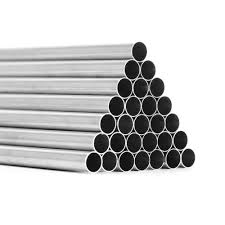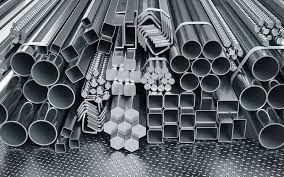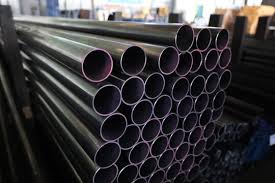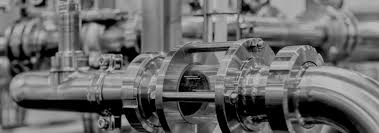
In construction, industrial systems, and high-performance manufacturing, selecting the right type of stainless steel is not just a technical decision—it’s a strategic one. One of the most critical distinctions is between stainless steel pipe and stainless steel tube. While the two may appear similar, they serve vastly different purposes, and understanding these differences can have a significant impact on system performance, budget, and long-term maintenance.
At Chamunda Steel Centre, we believe in equipping our clients with accurate knowledge that empowers better decision-making. This detailed guide is crafted to break down the key differences, functions, specifications, and applications of stainless steel pipes and tubes, helping engineers, buyers, and project managers make informed choices. Whether you’re transporting high-pressure fluids or designing structural frameworks, selecting the right stainless-steel product is foundational to success
What Is the Difference Between Pipe and Tube?
Although they are often mentioned together, pipes and tubes differ significantly in terms of measurement standards, function, and design. Pipes are primarily used to transport fluids and gases and are measured by their internal diameter (ID) and wall thickness. Tubes, on the other hand, are used in structural and aesthetic applications and are measured by their outside diameter (OD) and wall thickness with tighter tolerances.
This distinction affects everything from fluid dynamics to load-bearing capacity and aesthetics. At Chamunda Steel Centre, understanding this difference is the first step toward selecting the right solution for your needs.

Definition of Stainless-Steel Pipe and Tube
A stainless-steel pipe is a cylindrical, hollow component specifically designed for transporting fluids, gases, and slurries under pressure. It is defined by its internal diameter (ID) and thickness, typically following industry-standard schedules. Pipes are engineered to withstand high-pressure environments and provide long-term reliability in industrial systems.
Stainless-steel tubes, on the other hand, are precision-engineered products used primarily for structural support, mechanical systems, and high-accuracy assemblies. Tubes are measured by their outside diameter (OD) and wall thickness, with dimensional consistency and aesthetic appeal being top priorities. Tubes are often used in construction frameworks, automotive parts, and instrumentation.
At Chamunda Steel Centre, we provide both stainless-steel pipes and tubes in various grades and sizes, ensuring every industrial need is met with precision and durability.
What Is a Stainless-Steel Pipe?

Stainless-steel pipes are engineered for fluid and gas transmission under varying pressure and temperature conditions. They play a crucial role in industries like oil & gas, chemical processing, water distribution, and thermal energy systems. Pipes are primarily selected based on internal diameter (ID) and wall thickness or schedule, which directly relate to pressure ratings.
At Chamunda Steel Centre, we offer stainless-steel pipes in 304, 316, and other specialized grades, ideal for corrosion resistance, heat tolerance, and longevity. These pipes come in seamless and welded forms, enabling clients to choose based on application needs and budget.
What Is a Stainless-Steel Tube?
Stainless-steel tubes are cylindrical components designed for structural integrity and dimensional precision. Unlike pipes, tubes are measured by their outside diameter (OD) and wall thickness. They are used in architectural applications, furniture, automotive systems, medical devices, and structural frameworks where appearance, accuracy, and mechanical strength are important.
At Chamunda Steel Centre, we provide cold-drawn, polished, and seamless tubes with tight tolerances for high-end applications. Our stainless-steel tubes offer durability and reliability for both light-duty and heavy-duty industrial use.
Manufacturing Methods: Pipe vs Tube
Manufacturing stainless-steel pipes and tubes involves different technologies, each tailored to the performance and precision requirements of the final product.
• Pipes are often manufactured via extrusion or welding. Seamless pipes are extruded from a solid billet, while welded pipes are formed by rolling a flat plate and welding the seam longitudinally. This ensures excellent strength and pressure handling.
• Tubes are made using cold-drawing or precision rolling methods. The focus is on exact dimensional control and high-quality finishes, especially for medical or decorative use.
Chamunda Steel Centre ensures that every pipe and tube we supply adheres to industry standards, combining strength, appearance, and reliability.
Basic Differences at a Glance
Below is a quick comparison of stainless-steel pipe and tube based on key characteristics:
- Pipe: Measured by Internal Diameter (ID)
• Tube: Measured by Outside Diameter (OD)
• Pipe: Designed for fluid/gas transport
• Tube: Designed for structural or precision use
• Pipe: Common in oil & gas, plumbing
• Tube: Common in architecture, auto, medical
• Pipe: Standardized by schedule
• Tube: Standardized by OD and wall thickness
• Pipe: Less precise dimensions
• Tube: Tight dimensional tolerances
Industrial Uses of Stainless-Steel Pipes
Stainless-steel pipes serve a broad range of industrial applications due to their strength, corrosion resistance, and adaptability to high-pressure environments. Common uses include:
• Oil & gas pipelines and refineries
• Water treatment and distribution systems
• Chemical and petrochemical transfer
• Steam and heat exchanger systems
• Power plants and boiler components
Chamunda Steel Centre supplies pipes that meet ASTM, ASME, and other international standards, ensuring long-lasting performance in demanding environments.

Industrial Uses of Stainless-Steel Tubes
Stainless-steel tubes are crucial in sectors where precision, aesthetics, and mechanical strength are required. Their applications include:
• Construction frameworks and supports
• Automotive parts like exhausts and injectors
• Furniture and architectural railings
• Medical instruments and hospital equipment
• Aerospace and hydraulic systems
At Chamunda Steel Centre, our stainless-steel tubes offer the perfect combination of performance and presentation.
Applications Across Industries
Different industries require stainless steel pipe and tube products for specific needs:
• Pharmaceutical: Clean, hygienic SS tubes
• Dairy/Food: Corrosion-free, sanitary piping
• HVAC: Pressure-rated SS pipes and coils
• Automotive: Fuel lines, exhaust, chassis tubing
• Infrastructure: Structural steel tubing and pipelines
Chamunda Steel Centre’s vast inventory and expert guidance make us the go-to partner for all such applications.
How to Choose the Right Product for Your Project
The choice between pipe and tube depends on several factors:
• Is the application focused on fluid transport or structural strength?
• What are the pressure and temperature conditions?
• What tolerances and finishes are required?
• Is appearance or mechanical strength more important?
Chamunda Steel Centre provides expert consulting to help clients select the right grade, size, and finish based on their specific project goals and industry standards.

Common Mistakes to Avoid
Here are frequent errors that could lead to project delays or cost overruns:
• Confusing ID and OD measurements
• Choosing pipe for structural loads or tube for pressure systems
• Ignoring surface finish requirements in visible areas
• Overlooking schedule and pressure ratings in piping systems
Chamunda Steel Centre ensures every client understands the functional and dimensional difference before making a purchase.
Final Thoughts: Make the Right Choice
Understanding the difference between stainless steel pipe and tube can improve system performance, project cost-efficiency, and safety. While pipes and tubes may seem similar, their specifications, tolerances, and intended uses differ significantly.
At Chamunda Steel Centre, we’re committed to delivering stainless-steel solutions that align with industrial standards and client expectations. Whether you need corrosion-resistant pipes or precision-engineered tubes, we offer quality products with technical support.
Trust us to be your reliable partner in stainless steel — because the right choice starts with the right information.
Not sure which stainless steel product suits your needs? This Jindal Stainless steel pipe and tube specifications page helps you choose the right material for your application.
1. What stainless steel grades are commonly used for pipes and tubes?
Common stainless steel grades include SS 304, SS 316, and SS 202. The choice depends on corrosion resistance, strength, and temperature tolerance. At Chamunda Steel Centre, we stock a variety of SS pipe and tube products in different grades suitable for various applications.
2. Which industries commonly use stainless steel pipes and tubes?
Stainless steel pipes are used in oil & gas, chemical processing, water treatment, and power generation. Stainless steel tubes find applications in automotive, construction, medical, and architectural sectors. Chamunda Steel Centre supplies both, ensuring clients get the correct product for industrial or commercial use.
3. What is the main difference between stainless steel pipe and tube?
The difference between stainless steel pipe and tube lies in their measurement and application. Stainless steel pipe is measured by its internal diameter (ID) and is mainly used for transporting fluids and gases. In contrast, a stainless steel tube is measured by its outside diameter (OD) and is commonly used in structural and precision applications. At Chamunda Steel Centre, we supply both SS pipe and tube in various stainless steel grades and dimensions for industrial needs.
4. How do I choose between stainless steel pipe and stainless steel tube?
Choosing between stainless steel pipe and tube depends on your application. If you need to transport liquids or gases under pressure, opt for a stainless steel pipe. For structural strength, mechanical use, or aesthetic design, go with a stainless steel tube. Chamunda Steel Centre recommends analyzing factors like SS pipe dimensions, pipe and tube thickness, and end-use requirements before purchasing.
5. Are stainless steel pipes stronger than tubes?
The strength of stainless steel pipes vs tubes depends on their design and wall thickness. Pipes are built for pressure handling, while tubes offer structural strength with precision. Both are strong in their respective applications. Chamunda Steel Centre offers guidance on selecting the right SS pipe and tube based on strength, application, and stainless steel grades.
6. What is a stainless steel pipe used for?
A stainless steel pipe is primarily used for transporting fluids, gases, and chemicals in industries like oil & gas, chemical processing, water treatment, and power plants. The key advantage of a stainless steel pipe is its ability to handle high pressure and corrosive environments. At Chamunda Steel Centre, we offer durable SS pipes designed for industrial applications, ensuring reliable performance and long life.
7. How is a stainless steel tube different from a pipe?
The primary difference between stainless steel pipe and tube lies in their dimensions and intended purpose. Stainless steel pipes are measured by internal diameter and used for fluid transport, while stainless steel tubes are measured by outside diameter and used in structural or precision applications. Chamunda Steel Centre supplies both SS pipe and tube, ensuring customers get the right product based on application needs.
8. What factors should I consider when choosing between pipe and tube?
When choosing between stainless steel pipe and stainless steel tube, consider factors like application, pressure requirements, dimensional tolerance, and pipe and tube thickness. Pipes are ideal for fluid transfer, while tubes are best for structural support and precision works. Chamunda Steel Centre helps customers choose the right SS pipe and tube with expert guidance.
9. Does pipe thickness differ from tube thickness?
Yes, pipe and tube thickness differs based on their purpose. Stainless steel pipes follow standard schedules for thickness, while stainless steel tubes have specific wall thickness based on precision needs. Chamunda Steel Centre offers both products with the correct SS pipe dimensions and tube thickness for industrial standards.
10. What are the common industrial applications of stainless steel pipes?
Stainless steel pipes are widely used in industries like oil & gas, petrochemicals, water treatment, food processing, and power generation. They are ideal for transporting liquids, gases, and chemicals under high pressure. The corrosion resistance and strength of SS pipes make them perfect for critical applications. At Chamunda Steel Centre, we supply stainless steel pipes in various sizes and SS pipe dimensions to suit specific industrial needs.
